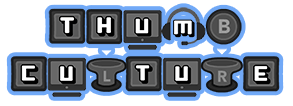
Sephonie is a 3D Puzzle-Platformer that was released on the PC on 12th April 2022. Developed, and originally published, by Melos Han-Tani and Marina Kittaka, the two-person team behind Analgesic Productions. It has recently been ported/published by Ratalaika Games and released on consoles on July 21st 2023.
Created by the developers of the Anodyne series, Sephonie is a self-described “Tony-Hawk-esque” 3D platformer. Puzzle elements combine to make a relaxed, if short, experience. The game leaves an impact on players who are willing to invest time into getting the most out of it.
Sephonie – A free-running match-three made in heaven
Analgesic Productions has a history of well-polished fun games with a quirky edge to them. The first Anodyne game was an honorable mention at the Student Independent Games Festival. The second was nominated for the IGF Grand Prize in 2020. So I was looking forward to getting hands-on with Analgesic’s latest effort!
If you’ve played this game tell us what you thought in the comments below!
Gameplay
Sephonie follows the story of three biologists as they explore the lush Sephonie Island, just off the coast of Taiwan. After their ship crashes make the best of their bad situation, using their new ONYX researching tool to catalogue the island’s flora and fauna. ONYX allows them to link their minds with other organisms to gain a whole new level of understanding. Happily for us, it also gives them wall-running and air-dashing skills up there with the best platforming protagonists!
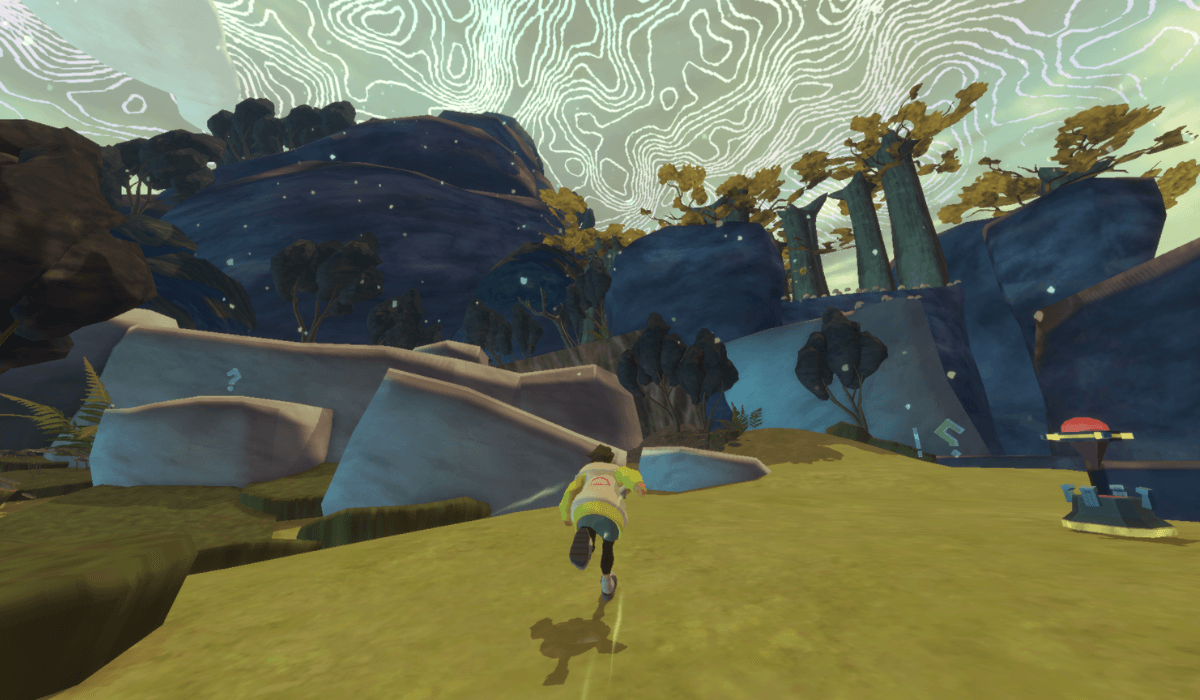
As time passes, they travel deeper within the island’s cavernous depths. They get closer with each other, learning about their differences growing up in Taiwan, Japan, and the United States. They also learn more about the island itself – and soon it becomes clear that all is not as it seems. Something horrible is lurking within the heart of the island.
The core gameplay can be divided rather cleanly into two separate aspects; the parkour platforming, and the ONYX puzzle minigame.
Parkour
As they themselves say, the parkour feels more like Pro Skater than Super Mario 64. There’s an emphasis on momentum, and slightly floaty controls make it feel like you’re driving at times. The level design has been tailored to suit this slightly odd feeling though, with fewer twitch-turns and pinpoint jumps. Instead, there are opportunities for graceful wall runs and clambers up walls. The control scheme can be a bit of a challenge to get used to, but after a few moments of wiring your brain into the way things go, it becomes rather intuitive.
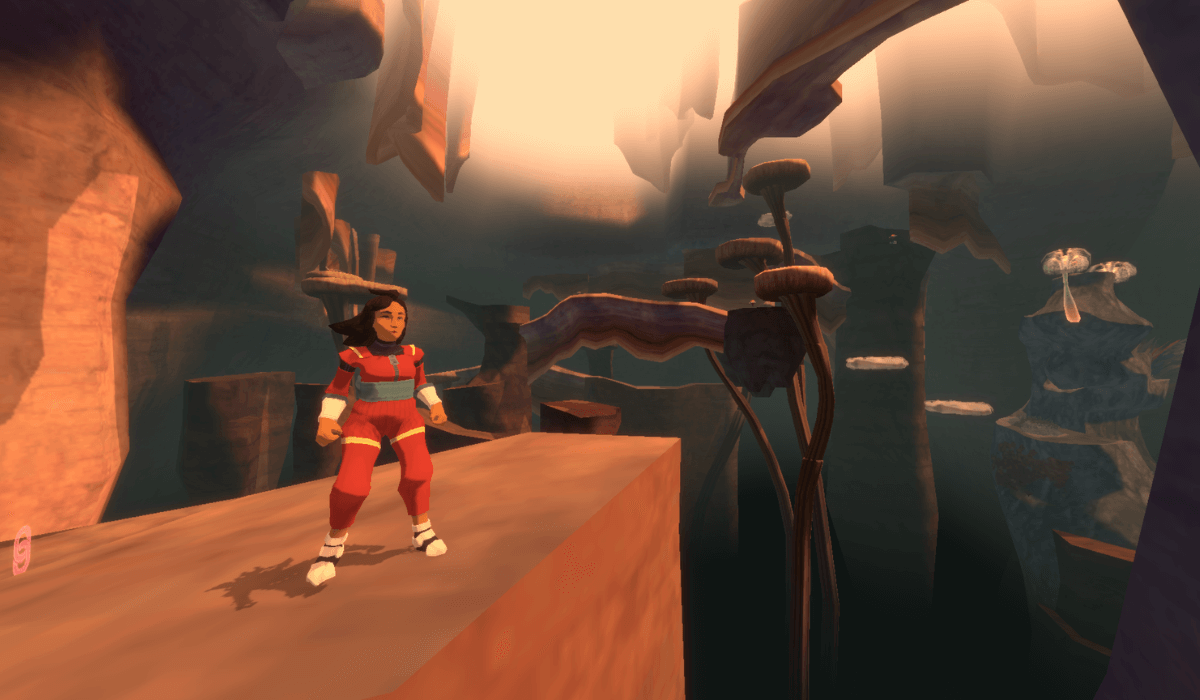
There’s not much else to be said for the parkour-platforming other than its progression. The game gradually introduces some more complex mechanics as you delve deeper into the island’s depths. Mushrooms that refill your air-dash, flying frog-bats that let you swing from their tongues, and fields of poisonous fungal spores provide some welcome variety on your way to Sephonie’s other main attraction: the ONYX link puzzles.
ONYX Link Puzzles
The ONYX link puzzles take the form of a match-three-esque Tetris-alike, where the name of the game is to create big chunks of same-coloured blocks. The bigger the chunk, the bigger the score, and the quicker your completion gauge fills. Fill the gauge all the way to the top, and the link is complete!
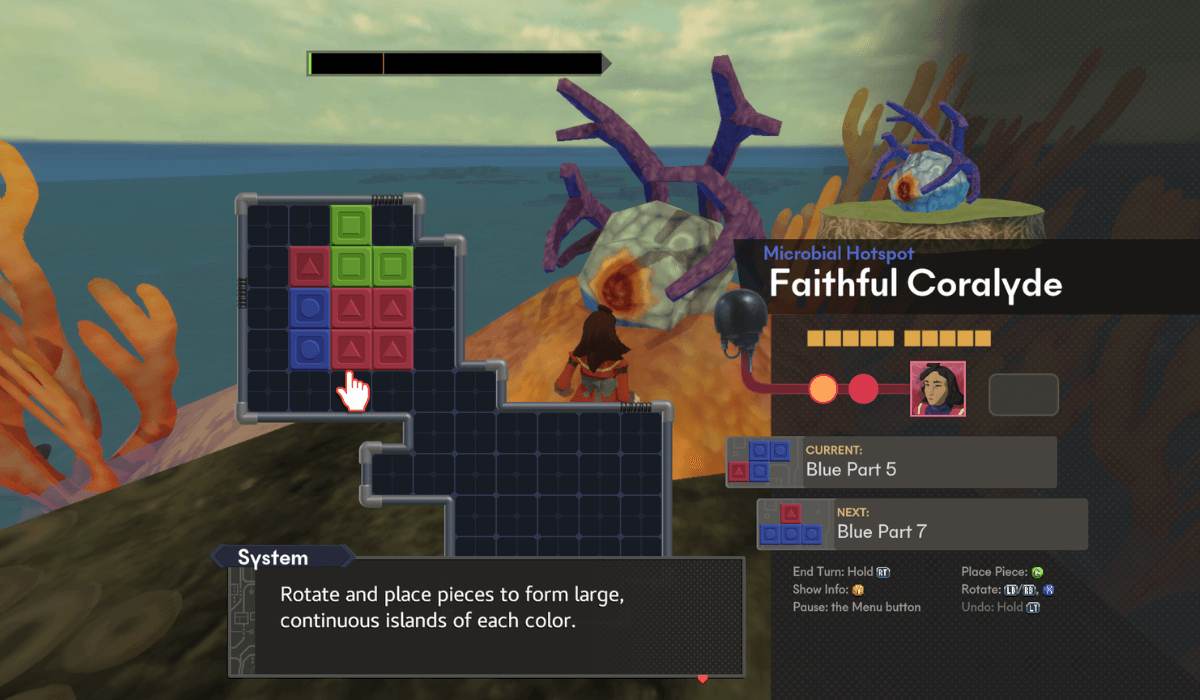
These puzzles aren’t too complex and are perhaps a bit too forgiving. The game’s main difficulty here is the fact you get given rounds of blocks to use, and you have to reach a minimum score per round. But the liberal sprinkling of double-point sections on many of the puzzle boards, along with an undo you can use at any time, means that this rarely becomes a point of nervousness at all. A timer function might have added some needed pressure here. But without it, the game does allow itself to take a more relaxing and meditative stance. This itself does fit into the ONYX link’s purpose as a tool of connection, rather than combat.
Key Creatures
Completing these ONYX challenges links the researchers to the creature you’re examining, allowing an insight into where they fit into Sephonie Island’s complex ecosystem. The range of creatures you encounter is vast; a whale that intentionally beaches itself to provide a safer place for its young? Right here on the sand. A pitcher plant with two sections that offers its prey a life-or-death gamble between a perfect place to reproduce or digestive acid? That’ll be in the caverns.
At certain points, you link with so-called “Key Creatures”. These creatures are vital to Sephonie Island’s ecosystem’s continual growth. These ONYX puzzles feel a bit similar, perhaps adding in new mechanics to spice things up, but are still unchallenging. For instance, there was only one time when I didn’t complete a puzzle on my first try. But after completing the Key Creature’s link challenge, you are treated to a dream-sequence-like scene of Amy, Riyou, and Ing-Wen’s pasts in their respective homelands. They grew up in different countries – the US, Japan, and Taiwan – but all share Taiwanese ancestry. Each vignette of their own lives feeds into the others, raising questions of how different – or rather how similar – they are below the skin-deep differences between them.
Secrets and Collectibles
A fun side note of these creatures is that you get to hear them “talk” about themselves in a distinctive voice all their own. On further examination, the pitcher plant mentioned above takes on the role of a sleazy conman. It’s a small thing, but it’s an example of the game rewarding engrossed players with more solid writing.
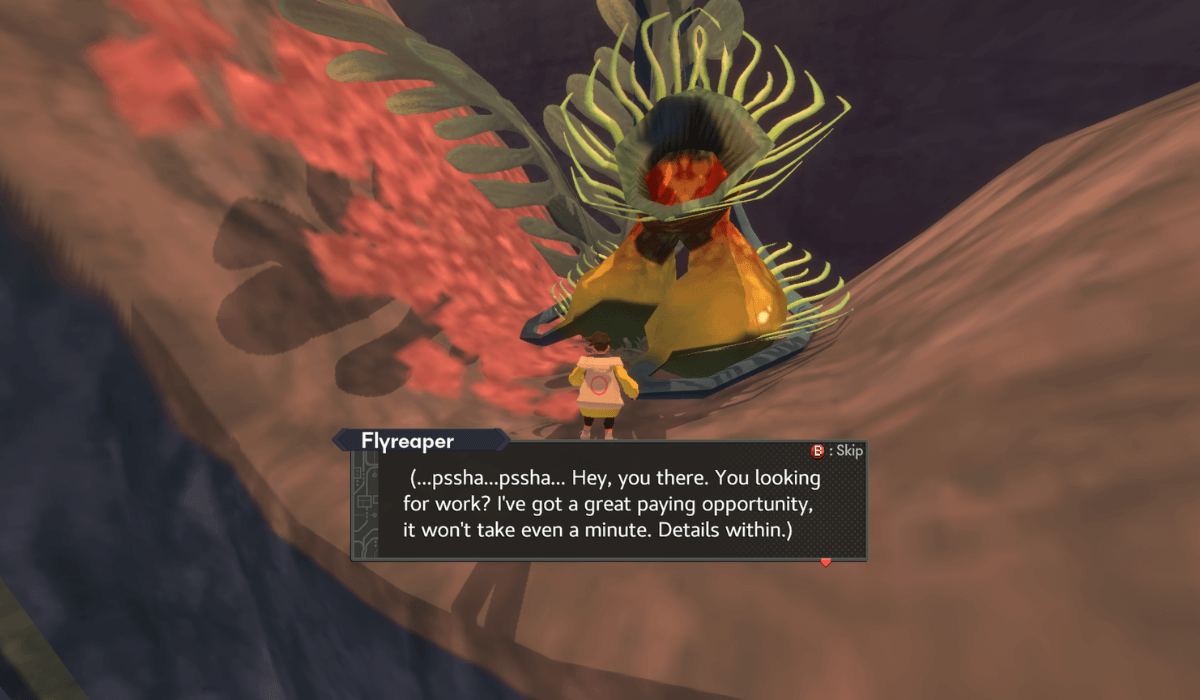
This attitude carries over into the game’s collectibles. Around levels, you can find small pods floating in place next to particularly challenging parkour paths or in hard-to-notice nooks and crannies. These pods reward players with a small story about one of the trio’s memories of their lives before the island. These memories always link to the game’s greater narrative around experience, identity, and reflection. There are no gameplay interactions with these collectibles beyond the feeling of satisfaction as another piece of the puzzles that are our main characters slot into place, contextualising their personalities that little bit more.
The connection between the two strands of the gameplay can feel lacking, without much cross-pollination between the two. However, the strength of the narrative linking them together makes up for it, leaving a challenging and fun platforming game broken up with rests of calm puzzling.
Graphics & Audio
Art Style
It felt quite funny to be playing Sephonie on the Xbox Series X as the game takes inspiration from PS1 era graphics and design, and that inspiration is proudly worn on Sephonie’s sleeve. It felt a bit odd to be seeing visuals I remember from my first forays into gaming on the console I play the latest AAAs on – but definitely charming!
This low-poly vibe is immaculately pulled off. The team at Analgesic hasn’t fallen into the classic pitfall of taking old-school graphics without updating them for modern tastes. Instead, players are treated to diverse and quietly beautiful landscapes that look perfectly suited for an old Zelda title.
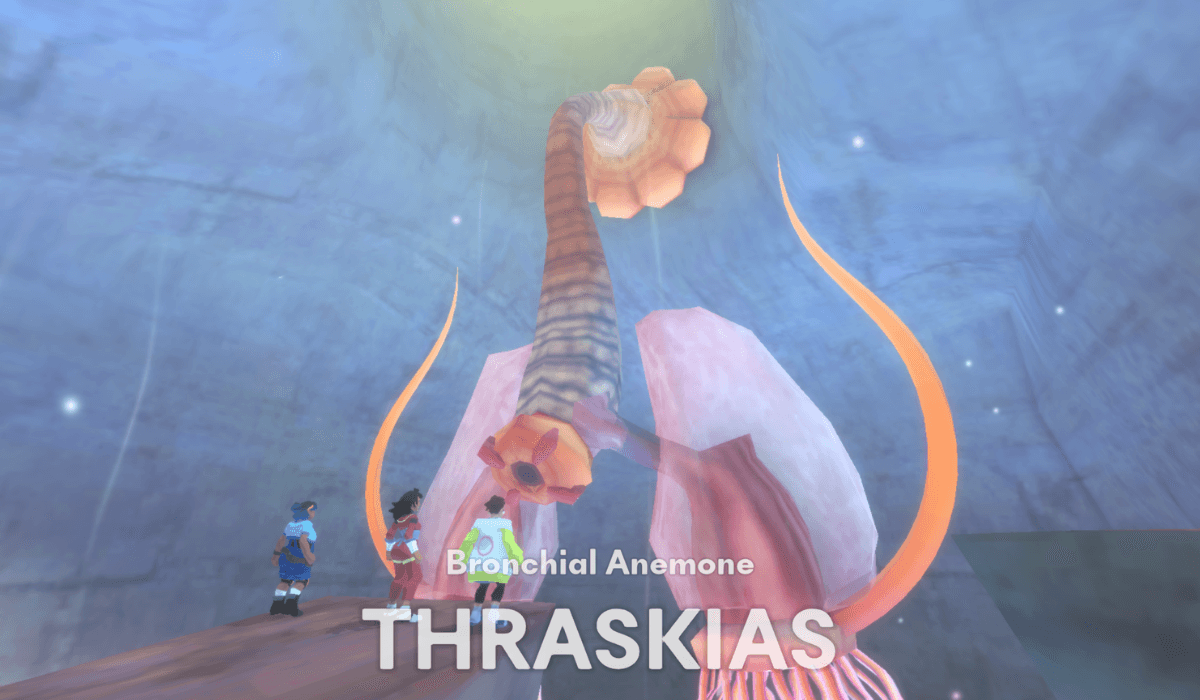
Moreover, they feel like they’re from a game from the current gen of game design. The model design and pixel art textures are constructed stylishly, each individually pretty and together making locales that feel like actual places rather than assault courses for testing out your platforming skills.
The art direction is consistent throughout the game, with no sights that feel out of place. The notable exception is the user interface, which is thankfully taken right up to modern spec and resolutions. No squinting at tiny pixel typefaces here!
Performance
The robust nature of the art style Analgesic has chosen also means the game’s performance is equally robust. I had little-to-no dropped frames or visual bugs at all in my ten hours of playing, even in areas with more particle effects. The game has been optimised really well, which is great news for the speed runners this title is courting with the movement system. Coupled with an in-game timer, this game comes suited for speed straight out of the proverbial box.
Music and Sound
The game’s sound design is as good as its visuals, with satisfying noises for wall slides, sprinting, and even walking through differing textures – which is made even better by the fact that each character has their own distinct sounds. The soundtrack is just as good, reinforcing the dream-like quality that the graphics and narrative pull off so well. The synth-led melodies and thrumming rhythms evoke the feelings of alien life and exploration – as well as passing the litmus test for good game music. I didn’t get tired of it as I backtracked through areas looking for anything I missed!
Longevity
Sephonie isn’t a long game, with a main story you can blitz through in about 6 hours. More importantly, it’s not a game that you’ll want to blitz through either. I made my way through in about 10 hours, stopping to try my luck at collectible gathering when the mood took me, and throwing myself at a parkour line I wanted to get just right. But even then, I still missed a few collectibles here and there. There’s a higher ceiling for your time if you’re a bit of a completionist too.
As for replayability, I think this game’s story and the quality of the writing elevate it. Sephonie definitely has the potential to join games in my library like Tacoma, Night in the Woods, and Firewatch. I can see myself with a hankering for a good story and replaying it over a couple of nights in.
Final Thoughts
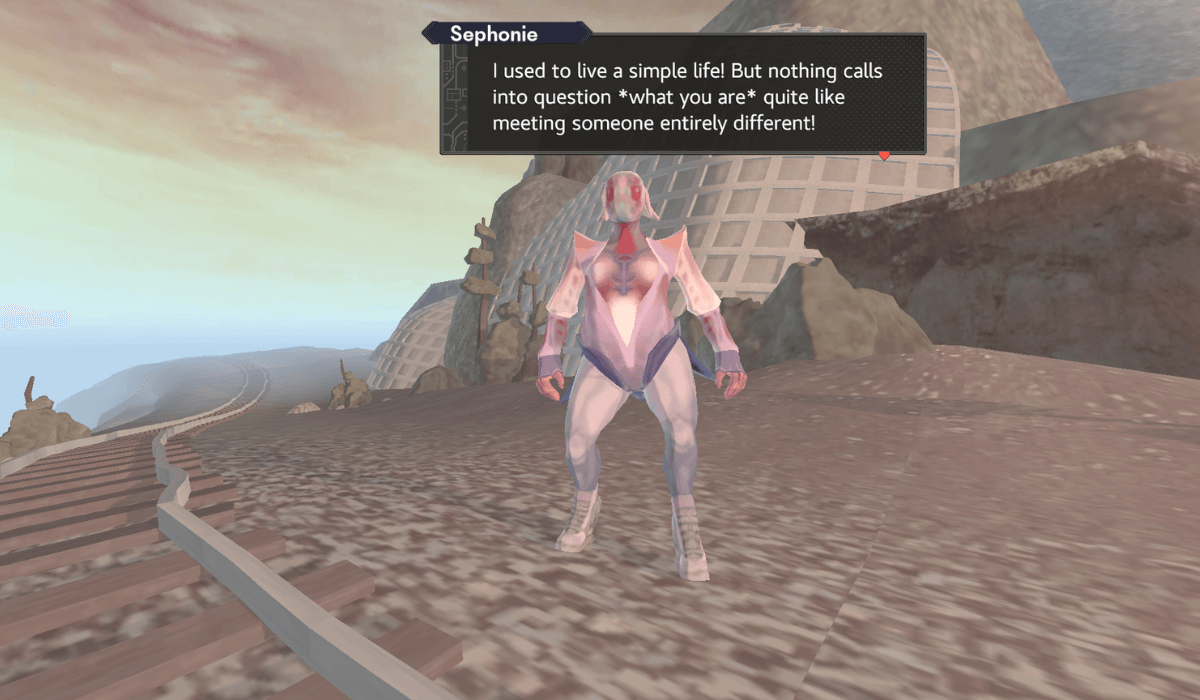
This game has fun platforming, relaxing puzzles, and a great story that asks big questions with down-to-earth protagonists. Sephonie manages to juggle three strong cores to individual games and bind them together (if a bit loosely) to make a satisfying experience that pulls you in – it has definitely won me over after my time with it.
After playing Sephonie, I’m definitely interested in playing the other games in Analgesic’s library to see if I can get another experience like it. But I think you should definitely take a look at it in the mean time. I award it the Thumb Culture Gold Award.

If you enjoy platformers, you might want to check out Mark’s review of the charming Koa and the Five Pirates of Mara, and keep an eye out for more coming down the ThumbCulture pipeline.
Disclaimer: A code was received in order to write this review.
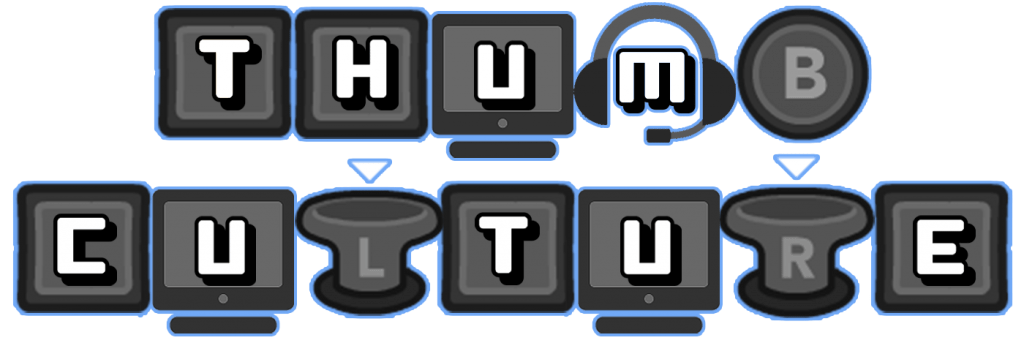
YouTube | Facebook | Twitter | Instagram | Discord | Podcast
